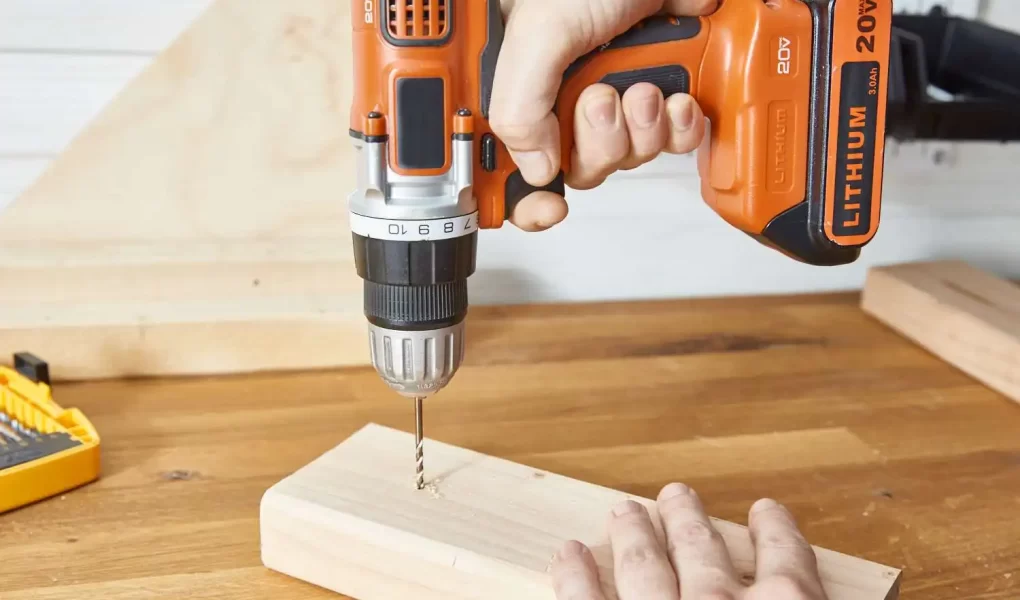Mastering the art of drilling may seem daunting initially, but anyone can become a proficient DIYer with practice and patience. By understanding the basics of drilling, having the essential tools on hand, following a step-by-step guide, avoiding common mistakes, choosing the right drill bit for the job, and prioritizing safety precautions, beginners can confidently tackle their drilling projects.
Start slow and steady before gradually increasing speed to prevent mishaps. Remember to clean up any debris after completing your project to maintain a safe working environment.
Understanding the Basics of Drilling

Understanding the basics is critical to achieving precise and efficient results when it comes to drilling. A drill’s primary function is to create holes in various materials, such as wood, metal, or plastic. Drills work by rotating a cutting tool known as a drill bit against a working surface.
There are different types of drills available, including corded and cordless options. Corded drills rely on electricity for power, while cordless drills use rechargeable batteries for portability. It’s essential to select the correct drill based on your project requirements.
Before starting any drilling task, mark the spot where you want to make a hole using a pencil or marker. In this way, you will be able to ensure accuracy and avoid any unnecessary mistakes. The hole depth you need to drill before selecting the appropriate drill bit size.
Essential Tools for Drilling
Having the right tools is essential for successful hole drilling. One of the most important tools you’ll need is a corded or cordless drill, depending on your preference and needs. Cordless drills offer more flexibility regarding movement, while corded drills provide constant power.
You’ll also need drill bits in various sizes to accommodate different projects. It is essential to choose the correct bit size for the hole you want to create. A set of screwdrivers will also come in handy for attaching and adjusting components during and after drilling.
A level is crucial for ensuring your holes are drilled straight and at the desired angle. A tape measure will help you accurately measure distances between holes or from edges. Safety gear such as goggles and gloves should always be worn to protect yourself while drilling.
Step-by-Step Guide to Drilling a Hole

Drilling a hole may seem daunting at first, but with the right tools and technique, it can be straightforward. To start, mark the spot where you want to drill using a pencil or marker. You will be able to drill with greater accuracy and precision if you do this.
Next, secure the material you’re drilling into with clamps or other stabilizing tools to prevent movement during the process. Based on the diameter of the hole needed, choose the appropriate drill bit size for your project.
Insert the drill bit into your power drill and adjust the speed settings according to your working material. Hold the drill perpendicular to your work surface and apply gentle pressure as you begin drilling.
Once drilled through the material, release the trigger before pulling out the bit to prevent damage.
Common Mistakes to Avoid
When it comes to drilling a hole, beginners often make some common mistakes. One of the most frequent errors is not using the correct drill bit for the material being drilled. Using a wood bit on metal, for example, can damage both the material and the bit.
Another mistake is drilling too quickly or applying too much pressure. This can lead to overheating the drill bit and poor results in creating a clean hole. Let the drill do the work at its own pace is essential.
Your workpiece can move correctly during drilling, leading to inaccurate holes or injuries. Always ensure your workpiece is firmly clamped down before starting.
Neglecting safety precautions, such as wearing protective gear like goggles and gloves, can be dangerous when drilling. Safety should always be a priority when working with power tools like drills.
Tips for Choosing the Right Drill Bit
When choosing the right drill bit for your project, there are a few essential tips to keep in mind. First and foremost, consider the material you will be drilling into. There are different types of drill bits that are necessary for drilling different types of materials.
For wood projects, opt for Brad point or spur point bits, which provide clean and precise holes. Cobalt or titanium-coated bits are ideal for metal drilling because of their strength and durability. Masonry projects call for carbide-tipped masonry bits that can easily penetrate concrete or brick.
Another essential factor to consider is the hole size you need to create. Make sure to select a drill bit that matches the diameter of the hole required for your project.
Always ensure that your chosen drill bit is compatible with your drilling tool. Using an incompatible bit can lead to inefficiency and potential damage to the bit and the tool. Remembering these tips, you can confidently choose the right drill bit for any drilling task!
Safety Precautions when Drilling
When it comes to drilling, safety should always be a top priority. Before you pick up your drill, make sure to wear appropriate safety gear, such as goggles, to protect your eyes from debris. Wearing gloves can also help prevent accidents or injuries while handling the equipment.
It’s crucial to secure your workpiece properly before drilling to avoid it slipping and causing harm. Always double-check that the area you are working in is clear of any obstacles or potential hazards that could lead to accidents.
Before starting, ensure that your drill bit is sharp and in good condition, as dull bits can cause the drill to kick back unexpectedly. When drilling, apply gentle pressure and let the tool do the work for you; forcing it can result in losing control of the drill.
Always unplug the drill when changing bits or adjusting to prevent accidental starts. Taking these precautions will keep you safe and ensure a successful drilling experience every time.




